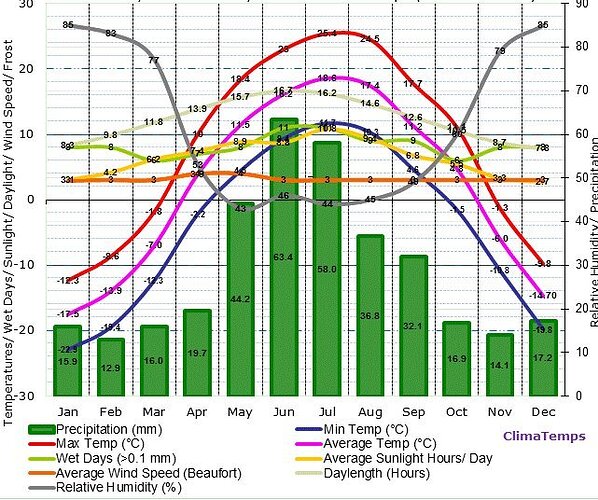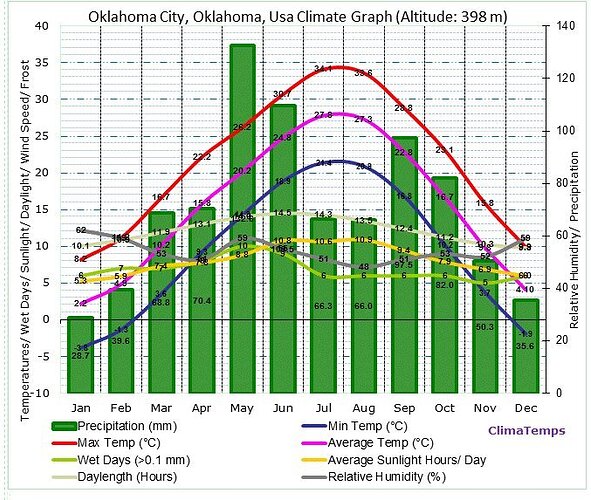An interesting, maybe contentious, report about home energy storage:
In general, many US energy suppliers don’t like customer generated energy because it cuts into their revenue stream. One example is the state I live in, Oklahoma. The Oklahoma public utilities people call PV owners “freeriders on the system.” They claim we don’t contribute our fair share to the cost of grid upkeep.
So they decided to slap a fee on a PV system owner’s electrical bill. Any homeowner who installed a PV system after 1 Nov 2014 pays a surcharge in addition to their normal monthly energy bill.
(My system was installed in 2013. So far, they haven’t “grandfathered” any systems installed prior to 2014)
So the negative press isn’t surprising. It appears they want to do whatever they can to dissuade homeowners from installing PV systems. Telling people that installing a PV system means an increase in fossil fuel produced energy consumption sure sounds like it’s aimed at convincing people installing PV isn’t a good thing.
On the other side of the coin, so-to-speak, the local area utility companies themselves, are in the process of installing PV in addition to the wind turbines already in place. One of three such facilities has already been built, two more are under construction.
Sure smells of a double standard…
The original story reads a little different than the E&T story:
i agree with the article somewhat, as over the last 10 years i had each types of systems first 100% battery storage, then 100% grid tie, now a hybrid of the both, (but only have essential functions on battery for emergency and security during power outages - and most likely when I buy my electric car I will use its storage for emergency power outages and not invest in more batteries for storage) , batteries always cost more energy over providing directly to the grid… as batteries( battery type dependent) absorption is generally only about ~80%. and release is generally ~90% so that a ~30% loss overall. grid ties are ~85%… so that about ~15% rough estimate for basic battery types.
Interesting articles  great to see the originals too. I havent yet read the original nature paper but from what I gather so far the main point being made is:
great to see the originals too. I havent yet read the original nature paper but from what I gather so far the main point being made is:
Lets say you have 4kW of PV generating 4x 900kWh = 3600 kWh/year, If for argument 50% is assumed to be exported in a household without storage it will displace near 1800 kWh of some kind of dis-patchable grid generation usually coal/gas. We might also take into account a ~7% grid loss here but I will leave that out for now.
If that originally excess solar is instead stored in a battery and then used in the evening/night around 10% would be lost (assuming round-trip efficiency of 90%). The battery allows us to displace 1620 kWh of otherwise imported evening/night power, or in other words 180 kWh less of coal/gas generation are displaced with storage added. (lower figures than in the article but thats the idea If im reading correctly).
If we assume that the losses in the local grid are small (that excess solar can be used by neighbours), that there is plenty of grid capacity to transport the excess solar the result does suggest little carbon benefit from installing the batteries (but it also misses the point of batteries a bit as there is more too it).
There are quite a few examples of this kind of thing that depend on the nature of the grid that the solar or other renewable technology is feeding into. One interesting one that we discussed at length at the monthly EcoHomeLab meetup in Manchester last year was the carbon merits of shifting demand through interventions such as deciding when to charge an electric car or do the washing.
A lot of the things that make sense and will likely be very important in a high renewable penetration grid are less clear cut when maximum renewable output is less than overall demand in general, i.e if you shift demand about you might just be shifting gas power station use from one time of day to the other. At the same time there are already stories of specific local grid capacity issues resulting in curtailment of renewable generation - if this otherwise curtailed renewable generation can be used there is a carbon reduction benefit in the present.
These discussions about the relative merits of different actions within the present grid was part of my motivation to revisit the ZeroCarbonBritain 10 year energy model again and include the whole variety of storage technologies in the web model here: Learn | OpenEnergyMonitor
to understand how things change as renewable penetration increases.
One of the interesting indications is that the size of battery storage required to cover all of demand can be quite large ~110 kWh per household for traditional electric + EV’s and as high as ~700 kWh if heatpumps are included with their high winter demand (see appendix note on the Learn:renewable heat page).
That’s one of the reasons the ZeroCarbonBritain scenario uses biomethane produced from biogas + sabatier enhancement, utilising hydrogen generated from excess wind&solar - burned in gas power stations for bulk inter-seasonal backup requirements.
Batteries (for home/grid storage) are still used and play a vital role but they are used more for grid stability and reducing the peak backup demand rather than bulk storage. That way you need relatively small battery stores in the region of perhaps ~10 kWh per household that get cycled a lot reducing the capacity of backup gas power stations required. The point often missed in discussions about storage is that there are a large number of different storage and backup technologies all with their own best areas of application.
As ever there is so much to this and a danger to oversimplify a complex topic, a difficult thing to do to some degree 
never understood why any one would use hydrogen generation that such a waste of energy at most you are only getting back 25% of what you put in . and hydrogen power cars your lucky you get 10%
read through article not sure how you get 700 kwh of storage… with a heat pump… i mean i live i pretty brutal area for climate average winter temp -18C… at average winter temps that would be almost 15-20 days of energy storage for me if the there was absolutely no sun what so ever. the UK winter temps are a balmy 5c during the winter… my house would require less then 2kw a day at those temps if it was heavy overcast. and if it was sunny. i would produce enough heat to last me 2 days… and 700kwhs would be be 40 days stored energy for me
looks like guys in the UK need to drastically improve your housing infrastructure. over trying to produce enough green energy to heat poorly designed houses… try this software out it free for 90 days… put your house specs into it . and you find out easy enough where to spend your money. be it more solar panels or cheaper more cost effective vapour barrier and/or insulation… REM/Rate | License and Download... - REM/Rate™
@stephen sorry yes I was discussing the use of stationary batteries in the home rather than transportation and in particular the use of hydrogen as part of synthetic fuel production processes for long term inter-seasonal storage, your right that the efficiencies of the processes are really low which is why it makes sense to use high efficiency stores such as Li-ion batteries for as much as you can use them for…
Have a play around with this model here, it is a UK model of course and the results will be different for different parts of the world but I think you will find it interesting, its not perfect but I think useful:
https://learn.openenergymonitor.org/sustainable-energy/zcem/integrated.html#fullhousehold
If you click on ‘stores’ at the top it shows a graph of the store levels in a mixture of different stores including li-ion, hydrogen and bulk backup bio-methane.
You can then remove bio-methane and hydrogen from the model by setting:
- all the inputs in the hydrogen section to 0
- all the inputs in the synthetic methane section to 0
- all the inputs in the synthetic liquid fuel section to 0 + putting a tick in the box for (Supply unmet liquid demand from less efficient direct biomass to biofuel process )
- and backup gas turbine capacity to 0 in the backup gas turbine section
The model result at this point is 92% supply/demand matching between the variable supply and different demands.
You can then both try increasing this level to 100% with a larger lithium ion store or/and larger capacities of renewable supply or/and larger efficiency improvements in housing (already 50% saving vs average UK home).
Increasing the lithium ion store to 700 kWh increases supply demand matching to 99.3%, alternatively if you increase solar from 1.92 kW per household to 4kW you can then drop the store size to 500 kWh to achieve the same level of matching, with 8kW of solar the store size can drop to 280 kWh. A large part of the storage requirement is driven by cold winters years 2006, 2010 & 2011.
@stephen interesting to hear the example of your house! is 2kW a day at 5c external temp 2kWh input electric providing say 6 kWh of heat? Do you know your heat demand in kWh/m2/year? or fabric efficiency in W/K?
The house used in the model has a space heating demand of 56 kWh/m2/y and fabric efficiency of 128 W/K. The building fabric can be improved in the model to reach near passivhaus standards of 15 kWh/m2/y.
I should say Im basically very enthusiastic about all of this tech, Both @glyn.hudson and I have EV’s and I installed an air source heatpump at where I lived last and work on heatpump monitoring with @johncantor, I would like to explore the use of a small stationary battery store to shift heatpump demand out of peak evening time, charge from solar and hope to build an efficient house at some point too… There are plenty of interesting topics around the exact way the different mix of technologies come together and points such as grid stability, opportunities for demand shifting through storage or/and better control, inter-seasonal backup etc, and many of the solutions to different problems are in flux as prices come down and technology develops. Hopefully I dont come across as knocking a particular solution 
oh i see the 700kwh- I assumed you matched battery storage to the panel production. for 700kwh of battery storage depending on how sunny or cloudy the location is… would be at least 8 kw of solar panels optimal around +18kw . if you ever depleted your batteries would take over 20 days of 100% production to recharge them at 8kw … and currently a lithium battery are ~200$ a kwh. 700kwh is $140000. to cheap out with only 1.5 kw of solar panels ( $1500) seams odd…
oh, my house consumption is based on the thermal storage i have installed. and my heat is generated by evacuated solar tubes… i find it odd that people fail to realize generally 60% of their energy usage ( in temperate climates) is heat… evacuated solar tubes are +80% efficient, thermal storage is 100% efficient .my house, as i retrofitted a standard house has about 800 litres of thermal storage( which on a sunny will heat up to about +60c. from 30c which is about 1 kw of energy storage per degree rise or roughly 30kwh of energy stored in the buffer each sunny day
if I was to build my house again , I would base it on how i do my greenhouses now. i would build a buffer storage in the middle of the house, that basically a highly insulated 3m X 3m room . in the centre of that room i would put a 1-2 cubic metre hot water tank that is that is is surrounded by earth. to fill up the 3mx 3m X3m room. - water has a high specific heat capacity, while earth as a lower specific heat capacity it also has a slow absorption and release rate. so over the summer it slowly rises the temperature of the soil to +60c. but that is roughly 60kwh per 1 degree rise. that is +2400 kwh of storage that more then enough heat energy to make the entire winter for me. not including the additional heat generated by my evacuated solar tubes all winter long
@stephen really interesting to hear about how your doing your heating. Id like to explore more on the heat storage side of things. I’ve been to a few events where large district heating schemes with inter seasonal heat stores have been suggested, they seemed to require a fair bit of additional energy to recover the heat from the store but Id like to spend more time reading up on this approach.
Im getting a slightly lower figure for a 3mx3mx3m room, even if filled with water suggests 31.5 kWh per 1 degree rise?
3x3x3 = 27m3 x 1000L x 4200J/kg/C = 113,400.000J/k / 3,600,000 J/kWh = 31.5 kWh/K
If you can heat to 70C and heat is useful down to 25-30C that would be 1260 to 1417.5 kWh?
Enough for the heating demand of a 85m2 passivhaus… 85m2 x 15 kWh/m2/y = 1275 kWh/year.
To clarify the 700 kWh li-ion store, I wasn’t suggesting that was practical at $140,000, there is only ~7 kWh in the default model scenario. You would of course increase the solar capacity if that was your only option and given the trajectory of solar prices that may well make sense up to quite a substantial level. There are also other options too such as backup biogas + sabatier, the exact balance of each will depend on where the costs of the different technologies go…
At present what percentage of your overall heat demand (space and hot water) do you supply from the SHW system and where are you based? What do you use for supplementary heat? Sounds like a really interesting setup!
yeah i noticed that after you mentioned somehow I did 54,000,000 cal in my math yesterday not sure where i went wrong I think it when I calculated weight of my soil mixture it was 2 tonnes per cubic I think I forgot to adjust for the specific heat capacity (33%) or ~1100 kwh which is still fine as my evacuated solar tube over produce by about 1800kwh for me per year.
there are couple of these thermal storage communities in canada … but they are not stored on site. I like my thermal storage within the living space. that way any heat lost is lost to the living space.
depending on time of year.
SWH will do 100% of the heating to about 2nd or 3rd week in November. then i turn on my heat pump then for for the next 3 months they will do about 30 %- 40% of my heating needs till about mid February. then from there it steadily climbs quickly ~100% again by mid march… generally it works out to about 66% of home heating is done by SHW ( 80% of my domestic)… but basically if the average temps are warmer then -5c. i can generally expect the SHW to do about 100% of my heating needs…
my house is basic R2000 compliant - so for it size it would require about ~15000 kwh to heat per year ( ~120 sqm) –
my heat pump consumes about 1500 - 2000 kwh for heating purposes per year so my SHW are doing about 60 - 66% of my heating needs
here roughly my climate
I thought I do a slight comparison of climate of the two cities mentioned in the thread - and give my opinion on how well thermal storage would work
Manchester;
your temperatures are quite temperate but sunlight hours are quite low. Not sure on the type of overcast you have. If it overcast and you still have a shadow, then solar thermal would work reasonably well. But looking at the overall climate, lacking the over abundance of sunlight hours a radiant thermal mass such as radiant floor would be more appropriate. A centralized, e.g. evacuated solar tubes would be operating at relative low temp, ~40c average and this would be a more direct heating method.
Oklahoma :
Your winter climate fall with in the limits of the solar thermal. It would be extremely easy to have ~100% of your heating needs covered by solar thermal for the winter. Your issue would be the summer months. You would have a vast amount of over abundant heat. but if you have a swimming or hottub it would not be too much of an issue. Otherwise, you would probably have to cover a potion of the solar tubes during the summer .
graphs from here Countries beginning with U - climatemps.com
Interesting thread. I always like to step away and look at a whole system from the point of view of what goes in and what goes out. Using local storage (assuming current technologies), there is obviously some significant loss. If you assume that consumption stays constant (not necessarily true for people using storage) then the losses must be made up from grid generation and that = more carbon.
I think we all agree on that, but for me, the real message at the start of this thread was the title and source of the article. It appears to be an industry magazine, and the title is very misleading in that the real point is that using storage increases emissions vs using grid storage (net metering). A casual reader might see the headline as saying that rooftop solar itself increases emissions.
That’s the frontier where the battle is being fought. Information and perceptions. Even this thread ventures beyond the understanding of most people. Today’s technologies are a lot more viable than most people are led to believe. Unfortunately, with the populist movements in the US and elsewhere, politics, science, engineering and reason are the victims.
A high efficiency wood stove and this

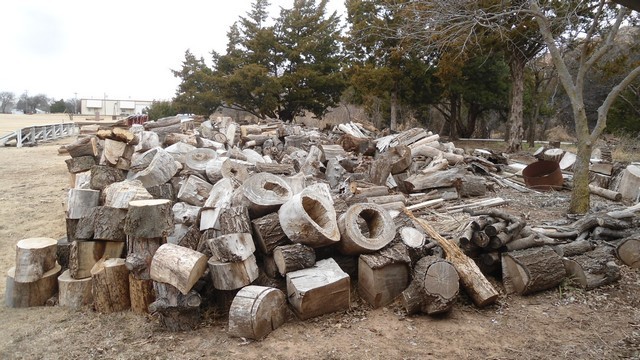
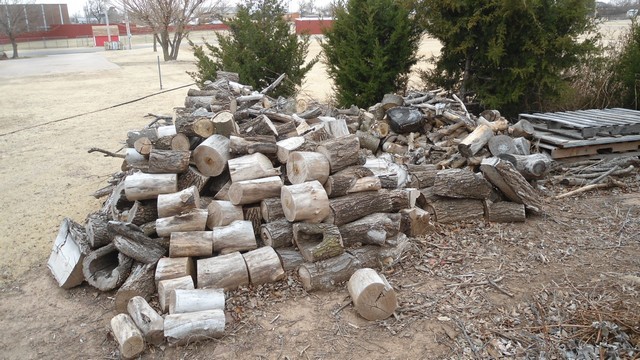
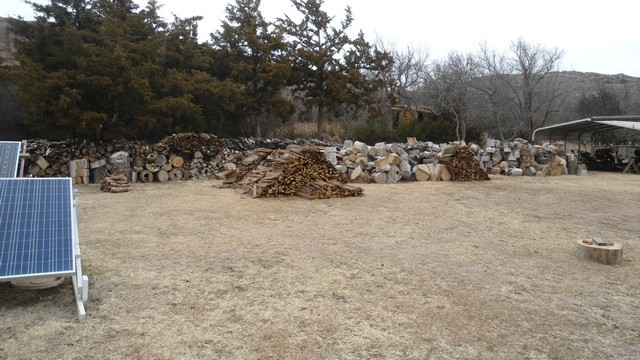



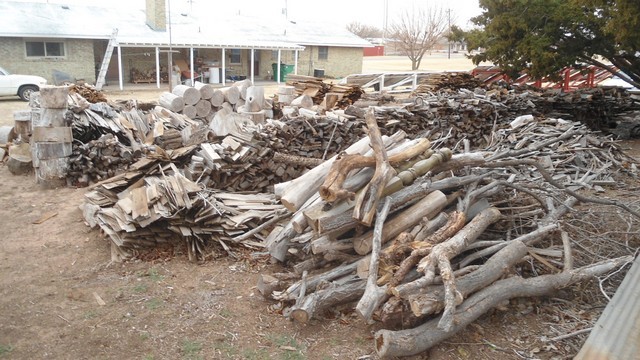
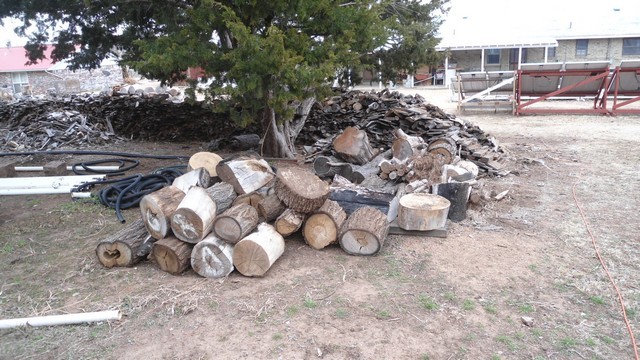
covers my heating needs.
These
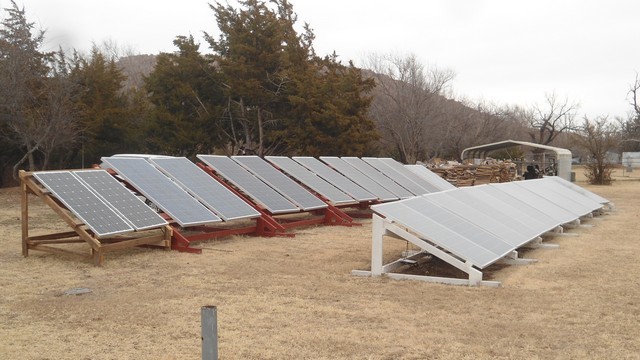
more than cover my cooling needs. (I have 16 more on my roof)
Otherwise, I probably would look into solar thermal heating. Thanks to a local landowner though, I’ve got enough wood to last me a very long time. As he put it, I “could make a career out of harvesting it.”
I use to burn wood at one time, 10 years ago, I use to build high efficiency wood boilers too ( you can find my plans for them on otherpower… but in the end it is cheaper and easier to run off thermal solar. as cutting and hauling 7 cords wood every winter is a real grind did it for ten years like that . and in reality, for everyone to go back to burning wood the forests would be depleted in under decade. i have lots of land, about 1200 acres about 300 of which is forest. so I also had an endless supply too. at currently <$150 to heat my house. it actually a lot cheaper too as it use to cost me about $200- 300 to cut and haul +7 cords plus time … for cooling I just use the ground loop and a large radiator (1mx1m ) no need for the heat pump at all . so cooling is very cheap something like 100 watts per hour to operate .
oh my that alot of panels…if I could get net metering I would be neutral at about 7 kw. at 15 kw and winter sun i could run at 100 % solar with out net metering
@stephen great example, and thanks for the geographical comparison and link to the climatemps site, very interesting.
@Bill.Thomson great to see the pictures of your setup. Its nice to put a ‘picture to the profile’ as it were.
well said!
Although I don’t burn 7 cords of wood in a winter (2, maybe 3) it’s actually beneficial for me as I have blood sugar issues (bordeline diabetic) so the exercise keeps the sugar levels where they ought to be, and it keeps me from gaining weight over the winter. A co-worker told me his grandfather was fond of saying “harvesting wood warms you twice. Once when you cut it, and again when you burn it.”
So, in my case, wood heat mkes sense. For others, probably not.
It’s a bit over 10kW.
Thanks T!
Odd that you should mention it. There’s a pic of my PV system in my forum profile.
[quote=“Robert.Wall, post:1, topic:2970”]
Contrary to popular belief, household storage for solar power doesn’t reduce cost or emissions, an American study suggests.[/quote]
Even the strap line is contradictory: if the household storage is for solar power, it doesn’t matter how much of it you waste in charging the battery, it won’t create any emissions. If you’re concerned about charging the battery from carbon-heavy grid power, change the design of the system so it doesn’t do that.
Their narrow point about household self-storage is probably correct.
If you imagine two identical houses with identical electricity use patterns, both grid-connected, each with a an identical photovoltaic system, and house A has local storage and house B does not, then house A’s total energy consumption will be higher, because house A is using some energy to heat batteries and house B is not. Their solar inputs will be identical, so the extra consumption must come from the power station.
That doesn’t require an experiment: it’s mathematically inevitable.
But I think it’s a red herring because local storage is most unlikely to catch on to any significant extent - it simply doesn’t make financial sense.
Looking at it purely from the financial point of view of an individual householder in the UK, ie someone saying to themselves “forget emissions, will a local battery system save me money?” - I suggest the answer is a definite “NO”.
Ignoring FITs for the moment, each additional kWh of solar electricity that you generate while your consumption is higher than your generation will benefit you by reducing your bill by 1 kWh - say 12p (call these “self-consumption” units). Each additional unit of solar electricity that you generate while your consumption is lower than your generation will not benefit you financially, because your consumption meter cannot run backwards (call such units “export-reimport” units). It follows that if you can shift one unit of electricity from “export-reimport” to “self-consumption” you will benefit financially by 12p. That’s ignoring FITs - but in fact they don’t alter this calculation at all. FITs are paid on the total amount of solar generation, and that is not affected by shifting a unit to self consumption (there is a very small part of the FITs called “export payments” but that is misleading because - for normal domestic installations - exports are not actually measured so you still get them just the same even if you reduce actual exports to zero).
So having established the benefit of shifting one unit from export-reimport to self-consumption, the question is: what is the cost of doing so?
A 6V x 503Ah flooded “deep-cycle” lead-acid battery costs £360 incl VAT
It is good for 2720 50% charge/discharge cycles.
So that is a lifetime storage of 2720 x 6 x 503 x 50% Wh = 4100 kWh
At 12p per kWh, the total cost of that amount of electricity would be £0.12 x 4100 = about £500
If I assume that I do one charge/discharge cycle per day, then the 2720 cycles last me 7.5 years. So I invest £360 and get £500 over 7.5 years. That is a positive rate of return, albeit much too small to be attractive. But that’s ignoring the capital cost of the inverter/charger and battery management system to translate between battery DC and mains AC. They may last longer than 7.5 years but they won’t last for ever. Factor those in and the rate of return sinks to zero or even lower, I suggest.
In any case few people will want to fiddle around with flooded lead-acid batteries.
If you re-do the calculations with LiFePO4 batteries, you get a far worse rate of return (for example a typical battery is 300Ah x 12.8V, claimed 5000 cycles at 50% discharge; that will cost £3500 and generate total savings of £1200 over its lifetime) . Of course this could change in the future, but right now and in the medium-term future, local storage just isn’t attractive.
